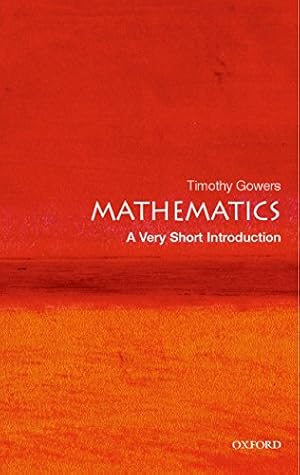| Digital List Price: | $7.99 |
| Kindle Price: | $6.99 Save $1.00 (13%) |
| Sold by: | Amazon.com Services LLC |
Your Memberships & Subscriptions

Download the free Kindle app and start reading Kindle books instantly on your smartphone, tablet, or computer - no Kindle device required.
Read instantly on your browser with Kindle for Web.
Using your mobile phone camera - scan the code below and download the Kindle app.

OK
 Audible sample Sample
Audible sample Sample 


Nothing: A Very Short Introduction (Very Short Introductions) Illustrated Edition, Kindle Edition
Frank Close tells the story of how scientists have explored the elusive void, and the rich discoveries that they have made there. He takes the reader on a lively and accessible history through ancient ideas and cultural superstitions to the frontiers of current research. He describes how scientists discovered that the vacuum is filled with fields; how Newton, Mach, and Einstein grappled with the nature of space and time; and how the mysterious 'aether' that was long ago supposed to permeate
the void may now be making a comeback with the latest research into the 'Higgs field'.
We now know that the vacuum is far from being empty - it seethes with virtual particles and antiparticles that erupt spontaneously into being, and it also may contain hidden dimensions that we were previously unaware of. These new discoveries may provide answers to some of cosmology's most fundamental questions: what lies outside the universe, and, if there was once nothing, then how did the universe begin?
ABOUT THE SERIES: The Very Short Introductions series from Oxford University Press contains hundreds of titles in almost every subject area. These pocket-sized books are the perfect way to get ahead in a new subject quickly. Our expert authors combine facts, analysis, perspective, new ideas, and enthusiasm to make interesting and challenging topics highly readable.
- ISBN-13978-0199225866
- EditionIllustrated
- PublisherOUP Oxford
- Publication dateJune 25, 2009
- LanguageEnglish
- File size650 KB
- Nineteenth-Century Britain: A Very Short Introduction (Very Short Introductions)
 Kindle Edition$7.49$7.49
Kindle Edition$7.49$7.49 - Continental Philosophy: A Very Short Introduction (Very Short Introductions Book 43)
 Kindle Edition$6.99$6.99
Kindle Edition$6.99$6.99 - Russian Literature: A Very Short Introduction (Very Short Introductions Book 53)
 Kindle Edition$6.99$6.99
Kindle Edition$6.99$6.99 - The Russian Revolution: A Very Short Introduction (Very Short Introductions Book 63)
 Kindle Edition$7.49$7.49
Kindle Edition$7.49$7.49 - Quantum Theory: A Very Short Introduction (Very Short Introductions Book 69)
 Kindle Edition$7.49$7.49
Kindle Edition$7.49$7.49 - Political Philosophy: A Very Short Introduction (Very Short Introductions Book 97)
 Kindle Edition$6.99$6.99
Kindle Edition$6.99$6.99 - Presocratic Philosophy: A Very Short Introduction (Very Short Introductions)
 Kindle Edition$6.99$6.99
Kindle Edition$6.99$6.99 - Particle Physics: A Very Short Introduction (Very Short Introductions Book 109)
 Kindle Edition$7.49$7.49
Kindle Edition$7.49$7.49
Editorial Reviews
Review
About the Author
Ray Chase graduated from the University of Southern California with a BA in theater and a minor in cinema and television. He has since worked extensively as a voice-over artist. Among his dozens of audiobook narrations are Ian Douglas' Heritage trilogy and Robert Olen Butler's Christopher Marlowe Cobb thrillers.
Product details
- ASIN : B005WSNRPK
- Publisher : OUP Oxford; Illustrated edition (June 25, 2009)
- Publication date : June 25, 2009
- Language : English
- File size : 650 KB
- Text-to-Speech : Enabled
- Screen Reader : Supported
- Enhanced typesetting : Enabled
- X-Ray : Not Enabled
- Word Wise : Enabled
- Sticky notes : On Kindle Scribe
- Print length : 177 pages
- Best Sellers Rank: #653,711 in Kindle Store (See Top 100 in Kindle Store)
- #87 in Existentialism
- #285 in Existentialist Philosophy
- #385 in Metaphysics (Kindle Store)
- Customer Reviews:
About the author

Discover more of the author’s books, see similar authors, read author blogs and more
Customer reviews
Customer Reviews, including Product Star Ratings help customers to learn more about the product and decide whether it is the right product for them.
To calculate the overall star rating and percentage breakdown by star, we don’t use a simple average. Instead, our system considers things like how recent a review is and if the reviewer bought the item on Amazon. It also analyzed reviews to verify trustworthiness.
Learn more how customers reviews work on Amazon-
Top reviews
Top reviews from the United States
There was a problem filtering reviews right now. Please try again later.
Author Frank Close, Professor of Physics at Oxford is a well-published author having written a half-dozen books on particle physics. He is also a fellow at Exeter College. Writing in easily read prose (for those familiar with particle physics) his book "Nothing" is an erudite expose of modern physics beginning with explanation of nothing, or a void. He begins with historical discussion of the vacuum or void (as noted in the Creation Hymn of Rig-Veda 1,700 years ago) & noting Thales had denied existence of No-thing 600 BC, i.e. that the universe could not originate from No-thing, discussing Empedocles concept of ur-matter (air, water, fire and earth) and the aphorism that "nature abhors a vacuum" was the accepted logic for 2,000 years; and concludes in discussing scientific experimental findings by von Guerick, Blaise, Pascal, Toricelli, Hooke and Boyle.
Already by Chapter 2 the author weighs in with discussion of the atoms, electrons and quarks, his writer-interaction prose providing a brisk understanding of particle physics to those having appropriate backgrounds and being aggressively crisp when particle physics is discussed to the novice. For less knowledgeable readers, this book is a good introductory source book on atomic compositions, gravitation, space, time, motion and electromagnetic fields, quantum mechanics, uncertainty principle and by chapter 8, the Higgs vacuum.
All in all, "Nothing" is a refreshing read on stimulating the mind to contemplate the known, unknown and help keep abreast and aware of the intense scientific efforts done world-wide which may help answer postulates surrounding the "big bang".
finis
On the other hand, and maybe because it is a space that lies on the current edge of our understanding, some of the concepts and ideas rely on having strong understanding of quantum physics or quantum mechanics, or at least for me , in concepts i have not internalised , so it took me longer to read as i had to stop, re-read or even take time to investigate some concepts. And i have to say, some of the stuff may have gone over my head as there are some areas were i could not understand.
In overall , good book, good presentation, but sometimes goes down some concepts to fast or assuming a knowledge that not all reader may have (like me). Maybe it is the only way to keep a book like this to have less than 1000pages or more than 1000 formulas...
Recommended for sure
If you have a HS student headed to his/her first "physics" class, this is a well posited gift that well help them grasp what's ahead and why. I've re-learned much less in much more of a book.
Top reviews from other countries
still the old view that our very space got created in the primordial soupe of potentiality - ... now in what medium does that primordial soup exists then, if not in space?
And I am wondering if this is the dilemma the Universe found itself in at the point of its transformation from nothing to something.
Mr Close does actually contradict himself in one or two places. On the one hand he says that the Big Bang created time and space (p143), while on the other hand he asserts that the Universe could have emerged out of the vacuum (p128).
Actually, I am not so sure that physics and cosmology really yet fully understand how it all got going.
If nothing else, a vacuum is a volume of space, but a volume of space that is enclosed inside a boundary, irrespective of whether energy or matter may or may not be present. If the Universe emerged out of the vacuum, then at the very least, space must already have existed.
Take the cathode ray tube for example. This is the most common example of a vacuum in which electrons make their way from anode to cathode. This can only happen if there is a boundary - the tube. Without the tube, the vacuum could not exist. Furthermore, anything existing outside the boundary i.e. the rest of the Universe, can have no meaning for the electrons inside the tube.
The importance and significance of boundaries were drummed into me as a pupil at school and a student at University, so it seems to me that in a discussion of vacuums, some discussion must be given to the nature of the boundary.
At the moment of the Big Bang, was there any kind of boundary, either conceptual or real? Is it possible that prior to the Big Bang, all of existence was contained in a point of zero dimension that also contained all of space?
Is it possible that all of space was wrapped inside this point of zero dimension in the same way that string theory talks about the wrapping of dimensions?
One of the problems I have with the Big Bang as it is presented to us lay people, is in being able to conceptualise it in my mind. I can imagine a single point encompassing all of existence, but my mind's eye is forced to view it from a distance, so I cannot in actuality imagine a point of zero dimension without at the same creating the space that allows me to see it from a distance, even though it is all totally imaginary. Unless I view the point from inside it, but then I feel I would be getting nowhere.
But then it occurs to me that we are not talking about just any old point of zero dimension. We are actually talking about THE definitive point of zero dimension of which there could only have been one; and not only that, in one form or other, you, me and everyone else was in there waiting for you, me and everyone else to become you, me and everyone else. Which quite frankly, I find implausible and impossible. Has physics really lost all sense of logic and rationality?
But then I ask myself, how does one conceptualise holograms, or dreams, or consciousness, though I must confess to knowing next to nothing of the physics of holograms.
Whilst being extremely informative and entertaining, Frank Close's little tome also provides much food for thought and gets you thinking about other strange and mystifying things such as - what is a virtual desktop? At its simplest, it's a little rectangle situated at the bottom right hand side of your computer monitor. Using your mouse, you can navigate within this little rectangle to switch between 2 or more real desktops.
You might have a tough time trying to explain how a software engineer might design and program this type of application. It involves layers of virtuality, because the desktop is itself an illusion, yet is a good example of how something comes out of something else that is not actually nothing, but is in fact the manipulation of binary bit patterns in a disk of 32- or 64-bit words that in reality, is never empty of full, but whose available space only appears to be changing in size.
























